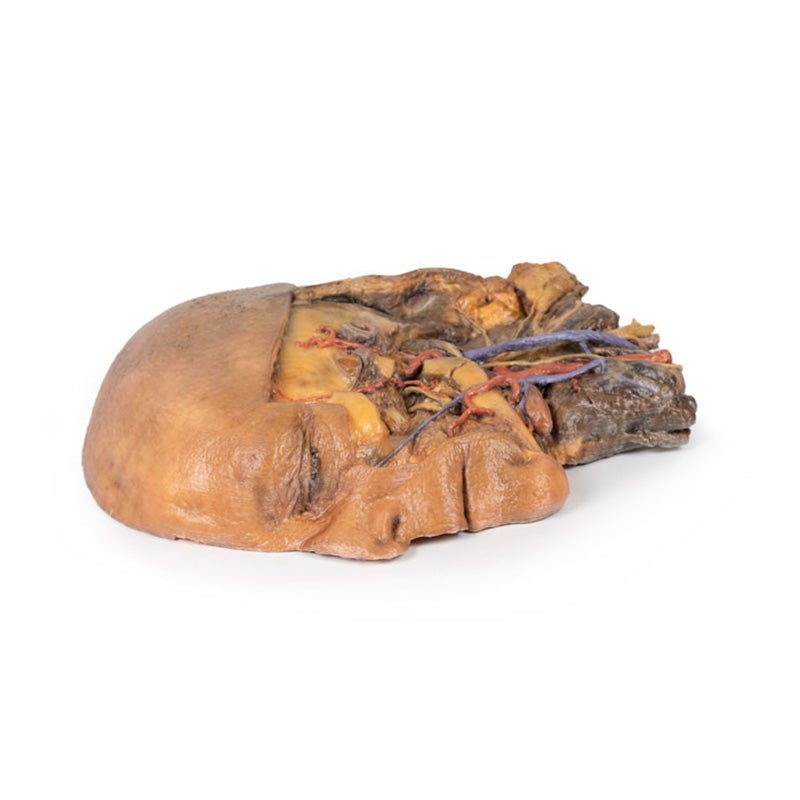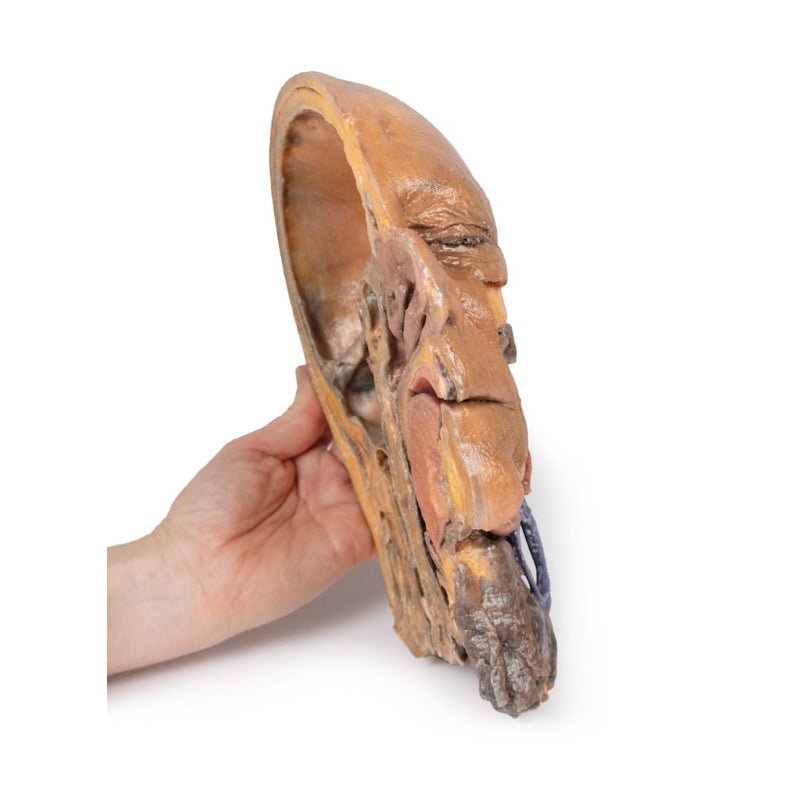Your shopping cart is empty.
3D Printed Sagittal Section of Head and Neck with Infratemporal Fossa and Carotid Sheath Dissection
Item # MP1111Need an estimate?
Click Add To Quote

-
by
A trusted GT partner -
FREE Shipping
U.S. Contiguous States Only -
3D Printed Model
from a real specimen -
Gov't pricing
Available upon request
3D Printed Sagittal Section of Head and Neck with Infratemporal Fossa and Carotid Sheath Dissection
This 3D model provides a complimentary specimen to the H 11 and H 12 head and neck specimens by providing a
perspective of the endocranial cavity without the brain, and a lateral dissection inclusive of neck anatomy.
In
the midsagittal section, the removal of the brain (and reflection of the medulla oblongata inferiorly) affords a
full view of the dura mater lining the endocranial cavity, including the tentorium cerebelli spanning from the
transverse sinus to the attachment to the clinoid process of the sphenoid. A series of cranial nerves, including the
optic (CN II), oculomotor (CN III), trigeminal (CN V), the abducens (CN VI) and the combined facial (CN VII) and
vestibulocochlear (CN VIII) nerves can be seen piercing the dura. The pituitary gland can be seen in cross-section
within the sella turcica, and the left vertebral artery can be seen ascending in the posterior cranial fossa.
The
lateral dissection to the face has retained some superficial structures while simultaneously exposing the anatomy
within the infratemporal fossa. The facial vein and facial artery have been preserved but are dissected away from
any superficial fascia or muscles of facial expression and lie across the corpus of the mandible and buccinator
muscle. Most of the ascending ramus of the mandible and the zygomatic arch have been removed to demonstrate some of
the infratemporal fossa anatomy, including the inferior alveolar artery and nerve and lingual nerve (resting on the
medial pterygoid), the posterior deep temporal artery (resting on the lateral pterygoid), and the articulation of
the mandibular condyle with the glenoid fossa. The terminal part of the external carotid artery is visible, as is
the first part of the maxillary artery and the superficial temporal artery.
Posterior to the infratemporal
region, the facial nerve (CN VII) can be seen briefly adjacent to the posterior belly of the digastic muscle. The
posterior belly of the digastric angles superficially to obscure the internal and external carotid arteries and the
internal jugular vein, which have been dissected from the carotid sheath (alongside the vagus nerve [CN X]). At the
angle of the mandible, and along the inferior margin of the corpus, the hypoglossal nerve (CN XII) rests just
adjacent to the central tendon of the digastric and the external carotid artery. Anteriorly, the facial artery is
integrated into the submandibular gland before ascending across the mandibular corpus, where the lingual artery and
anterior belly of the digastric can be observed. A set of superficial veins descend inferiorly into the neck as a
presumptive external jugular vein (although displaced given the removal of the retromandibular vein and
sternocleidomastoid muscle, it is too posterior to be an anterior jugular vein).
In the neck region of the
specimen, the hyoid bone is immediately deep to the submandibular gland and receives infrahyoid muscles just
superficial to a robust thyroid gland. At the cut section of the dissection inferiorly, the underlying larynx can
also be observed. Posterior to the carotid sheath structures, radiating cutaneous branches from the cervical plexus
rest on the scalene muscles, and near the inferior margin of the specimen the upper roots of the brachial plexus are
preserved adjacent to the exposed internal jugular vein.
 Handling Guidelines for 3D Printed Models
Handling Guidelines for 3D Printed Models
GTSimulators by Global Technologies
Erler Zimmer Authorized Dealer
The models are very detailed and delicate. With normal production machines you cannot realize such details like shown in these models.
The printer used is a color-plastic printer. This is the most suitable printer for these models.
The plastic material is already the best and most suitable material for these prints. (The other option would be a kind of gypsum, but this is way more fragile. You even cannot get them out of the printer without breaking them).The huge advantage of the prints is that they are very realistic as the data is coming from real human specimen. Nothing is shaped or stylized.
The users have to handle these prints with utmost care. They are not made for touching or bending any thin nerves, arteries, vessels etc. The 3D printed models should sit on a table and just rotated at the table.












































































